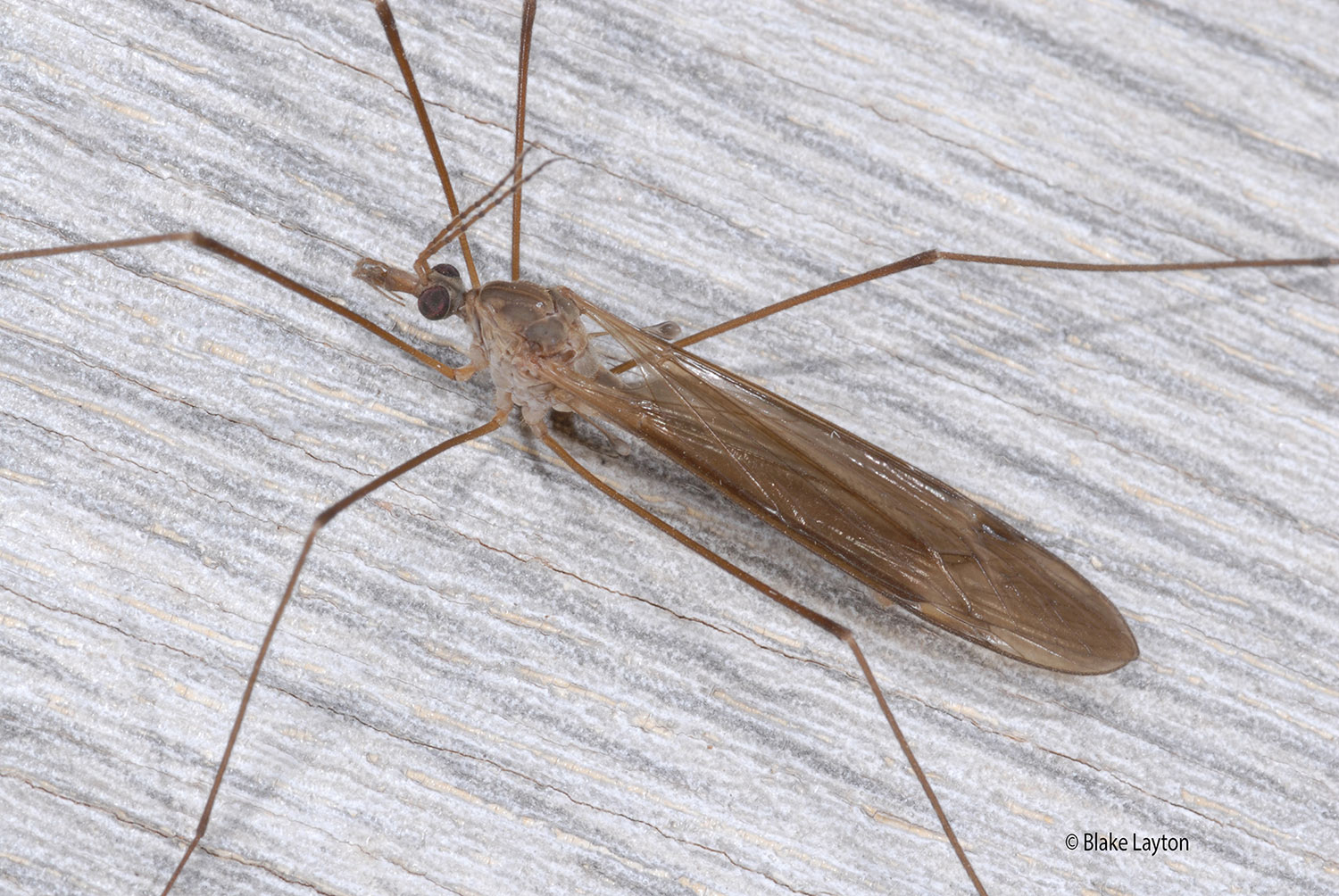Crane Fly Vol. 5, No. 5

Crane Fly
Many species
Order: Diptera
Family: Tipulidae
As a child, you may have been told these are called “mosquito hawks” because they eat mosquitoes. On the other hand, many people assume these are mosquitoes, really big mosquitoes, and that if one was ever so unfortunate as to be bitten by one, the bite would be very painful. Neither of these bits of folklore is true. Crane flies may look like overgrown mosquitoes, but they do not bite, and they do not eat mosquitoes.
These large, long-legged flies occur throughout much of the year, but they are especially common in the spring and are among the first insects to become active in large numbers. Those long, spindly legs are as fragile as they look, especially on dried specimens in insect collections. There is a special suture on the legs that allows them to break off easily to escape predators, a bit like the tail of some lizards.
There hundreds of species of crane flies and they breed in a variety of habitats. Where do they come from? Many species are aquatic or semi-aquatic, but the larvae of some of our more commonly encountered species feed in the thatch layer of grasses in lawns, fields, and roadsides, or in similar areas where there is a concentration of moist organic matter. Crane fly larvae, which are known as “leatherjackets” are sometimes seen crawling across sidewalks and driveways in the spring, especially following periods of heavy rainfall. Mature larvae are about two inches long, tan colored and lack true legs. The short-lived adults either do not feed, or only feed on nectar and other liquids.
Control: Because crane flies do not bite and do not damage plants, they are not really pests, except for the nuisance they cause when they get indoors. Insecticide sprays are not very useful for crane flies. Physical exclusion practices, such as window screens and closed doors, are the best defense. There are a few of species of crane flies that damage turf and rangeland, but these are not common in the Deep South.
Ready for a nerdy entomologist joke? The curator of a large insect museum at a prestigious university was being interviewed by a national magazine and had just explained that the collection contained more than two million specimens, collected from around the world. When asked to name the rarest insect in the collection he proudly responded, “We have a crane fly with all six legs!”
Blake Layton, Extension Entomology Specialist, Mississippi State University Extension Service.
The information given here is for educational purposes only. Always read and follow current label directions. Specific commercial products are mentioned as examples only and reference to specific products or trade names is made with the understanding that no discrimination is intended to other products that may also be suitable and appropriately labeled.

